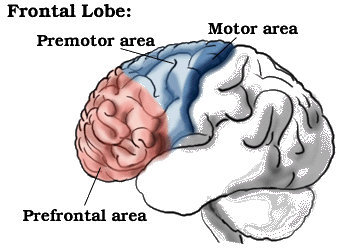![]()
About Frontal Lobe Injury:
The frontal lobes the largest and the last part of the brain to develop. Their size and location makes them vulnerable to injury, their role in adult behavioral development make such deficits difficult to measure and hard to rehabilitate. While often shown on CT, the focal damage in frontal lobes doesn't reflect the full picture, as there may be accompanying diffuse injury that may be harder isolate and more difficult to assess.
The frontal lobes (the front and upper part of the brain) are among the most often damaged areas of the brain, because they are adjacent to large portions of the skull. When the brain is subject to rapid acceleration and decelerate forces, the frontal lobes are likely to collide with the inside of the skull. While such collisions exceeds a threshold tolerance for impact, the frontal lobes are at risk. A blow to the forehead, will cause a transference of force to the frontal part of the brain.
For our further treatment of frontal lobe injury, click here.

Frontal Lobe - Front part of the brain; involved in planning, organizing, problem solving, selective attention, personality and a variety of "higher cognitive functions" including behavior and emotions.
The anterior (front) portion of the frontal lobe is called the prefrontal cortex. It is very important for the "higher cognitive functions" and the determination of the personality.
The posterior (back) of the frontal lobe consists of the premotor and motor areas. Nerve cells that produce movement are located in the motor areas. The premotor areas serve to modify movements.
The frontal lobe is divided from the parietal lobe by the central culcus. Click Here To Return To Diagram
The Areas Of The Brain, Their Functions And Associated Signs And Symptoms
 |
Attorney Gordon S. Johnson, Jr.
E-mail to: waiting.com
For legal questions call toll free:
1-800-992-9447
copyright ©2002 - 2013 Attorney Gordon S. Johnson, Jr., All rights reserved. For more on Attorney Gordon Johnson
http://gordonjohnson.com